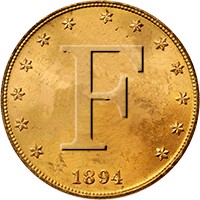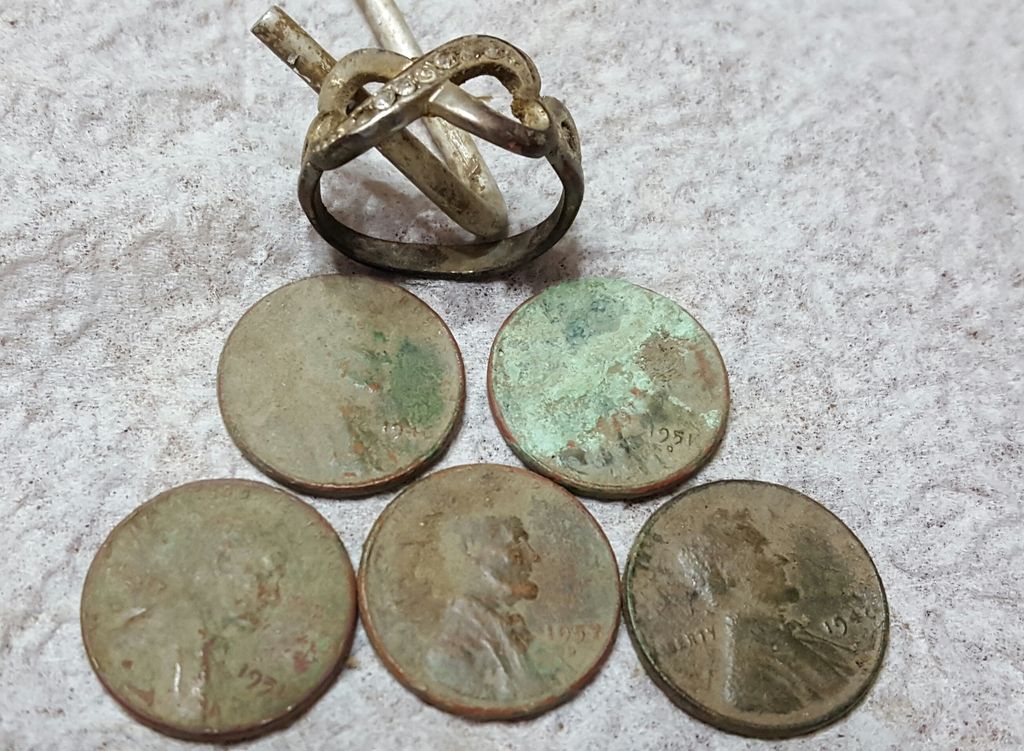IDXMonster said:
What I do usually is if I get a high pitch that shows anywhere in the "good" I'll sweep it both ways in IM-16, with a bit of practice it's easier to tell its probably a junker,or a nail. In all metal (IM-16) one way will make a good chirp as the coil field comes off the end of the nail. Sweep it the other way and it stays low. Charles can confirm or correct please,just my observation.Kevin
Keven you are 100% correct that's a classic rusty nail behavior throwing off a high pitch false with the cursor jumping to the right side of the screen. Now let me share perhaps the greatest Explorer tip ever posted by the great Mike Moutrey of St. Louis, MO. Mike was one of if not 'the' first Explorer guru and my idol when I purchased my first Explorer. BEHOLD the Explorer "bounce patterns" tip.
On deeper targets, past say 5-6 inches you will begin to notice the Explorer screen cursor 'bouncing' left and right. Silver dimes and IH cents have reliable bounce patterns, very reliable. Fortunately so do rusty nails trying to false over in the silver zone and the rusty nail bounce pattern is about 99% reliable. This means if you see this distinct bounce pattern you can call your shot and say, that's a rusty nail. Digging rusty nails will exhaust you and your patience so every rusty nail not dug puts you closer to your next good target. These bounce patterns are best observed in all metal no discrimination the screen wide open. If you see the screen cursor bounce from the upper left corner of the screen, all the way over to the right edge of the screen, the cursor half off the right edge of the screen, the cursor down maybe 3/8 of an inch from the top, that's the rusty nail bounce pattern of a nail falsing and trying to fake you out. But here's the thing, no other target other than a rusty nail bounces like that, and I have dug thousands of targets. If you see that bounce pattern there's no reason to waste time on that target it will be a rusty nail. With this tip you can kick the rusty nails butt vs wasting time digging a nail that was falsing.
Exceptions to this rule? Well a rusty nail bent into an L or U shape can give you fits at first. They will still mostly behave and sound ugly like a nail but as this can disrupt the bounce pattern and they false more frequently than a straight nail its more difficult to convince yourself not to dig. I talked myself into digging quite a few of them knowing it was probably a nail but hoping you know, but they were all nails. They can be more difficult to weed out for sure until your ears learn to discriminate the ugly iron quality of tone vs silver and copper. There are whole next levels on the Explorer once your brain and ears begin telling the difference in the quality of a tone AND the shape of the tone. If you guys read some of the old posts you will see people talking about fluty tones which is quite typical of silver dimes for example. Perhaps the same pitch as a rusty nail false in ferrous tones but the shape of the tone is quite different, in this case fluty like multiple notes on a flute. You here that I don't care what the screen says you DIG! Iron doesn't do that. BIG silver on the other hand can be quite solid and mono toned like a single note without variation but like a note in perfect pitch. Large cents are similar but I guess I would describe large cents as having a powerful tone.
Get ready for someone to call BS on this next one. I can tell the difference between a mercury dime vs any other silver dime. Mike explained this to us way back in the day. Mike once made a video or audio clip I don't remember. He recorded the tone of a coin, I think it was a wheat cent. Then he smacked it with a hammer and the tone changed. This explains why mercury dimes have a unique tone, they are a deep relief coin struck harder than other silver dimes. So yeah you can call your shot on a mercury dime with practice. You can do the same with gold rings. You can even call your shot on a gold wring with a cracked band where they were brazed together. Those are tough to learn because you have to dig quite a few gold rings to learn it and gold rings are few and far between. Even beach hunting it probably took me 3 years to hit my groove digging gold rings.
This one is for you guys hunting in all metal no discrimination. Would you ever dig a target say 1/2 inch from the left edge of the screen and a 1/2 inch down from the top? I mean that is WAY over in iron territory. I dug one once partially because I was curious what the heck would ID over there. Rusty nails ID reliably in the top/left corner, nothing really ID's where this thing was. The target was...a silver half reale worn so thin there was only a faint bit of the coin detail left the rest of the coin was perfectly smooth. Why did it get my attention, because mixed in with the low iron tones were some fluty notes! That's why I say if you hear fluty dig I have dug silver dimes fused to rusty iron that were 80% low iron tones and 20% fluty silver tones. If you see the cursor 'bounce' up to the silver dime area, cursor half off the top of the screen that's another indication to dig a target that is otherwise bouncing around the iron zone. A rusty nail or iron won't bounce right smack where a silver dime ID's on the screen so if you see the cursor lock on there a few times while sweeping the coil there's probably a silver dime mixed up with some iron or trash. I'm talking iffy signals now guys, if you are just learning the machine try not chasing too many of these at first. But if you hear fluty high tones in ferrous mixed with low iron tones and you are seeing the cursor occasionally bounce into the textbook location for silver on the screen I'd take a shot.
Final tip for the night. In an earlier post I said I love iron, bring on the rusty nails I love the iron. Why? Because the hoards of detectorists already found most all of the easy big silver targets long before I purchased my first detector, but you can still find big silver hiding in the iron, hell yeah give me a rusty nail pile. Two examples of this technique, I learned this by accident. There was a particular area of a park that had given up a lot of good finds in the Barber era. I was just detecting along when WHAMMO a solid silver hit then the thing vanished before my eyes. I turned 90 degrees left, then 90 degrees right, I turned 180 degrees, nothing just iron. I backed up scratching my head shrugged my shoulders and started detecting again and WHAMMO solid silver hit. I could only get a hit on this silver with the front 3 inches of my coil. Any further forward and it was solid iron. Turns out there was 3 silver dimes in that hole with a rusty nail on the left, right, and back side. This added a technique to my arsenal which was to sneak up on targets with the front of my coil. It also slow me down in terms of walking forward only about half a coil at a time in areas which were producing good finds.
About a year later I returned to this spot intending to work very slow along the sidewalk sniping with the front of my coil. I found Butch working down the hillside when I got there and to my dismay Butch informed me he had just spent the last week pounding the spot I was going to detect. Butch is very good, he goes slow, he's methodical. I thought about going somewhere else but Butch wasn't using a Minelab yet at that time so I figured what the hell make a couple passes. I went about 30 feet really slow using the front of my coil, I may have found one rotted IH cent in the hour it took then WHAMMO Barber half dollar!! It was hiding next to like a 2 inch square chunk of iron and you could only get a hit on it with just the front 3 inches of the coil and like the previous silver dime spill, only from that particular approach angle. I showed Butch where I dug it and he just shook his head in disbelief. So sniping with the front of your coil, not a bad technique in trashy areas known for old quality finds. This also means once a site has seemingly been hunted out, you can hunt it again from a different angle

Next chapter we'll discuss 'round' tones.


